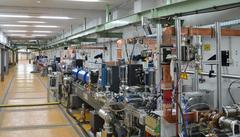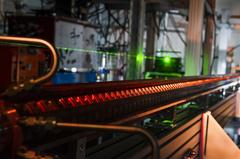URL: https://www.desy.de/news/news_search/index_eng.html
Breadcrumb Navigation
DESY News: Accelerate smarter with artificial intelligence
News
News from the DESY research centre
Accelerate smarter with artificial intelligence
Particle accelerators are universal tools: They help in production processes in industry, in tumor therapy in hospitals and enable unique discoveries and insights in research. Growing demands on the stability and properties of particle beams make a manual operation of these complex devices increasingly challenging – and require the highest possible level of automation to support operators.

At DESY´s ARES accelerator, the research team wants to gain experience with autonomous operation (photo: DESY/F. Burkart).
“The important characteristic of reinforcement learning is that the control system not only reacts but also plans into the future how to achieve a goal,” explains Annika Eichler from DESY, who coordinates the overall project. “For this purpose, the control system can decide on the basis of the information collected so far, but it must also have enough range to literally 'conquer' new control regions in previously unknown terrain. The long-term goal of the research team is to operate an accelerator fully autonomously. But first of all, the team is concentrating on controlling the density at which the electrons are distributed along the accelerated bunches. In addition to the length of these electron bunches - some of which pass the measuring device in less than a femtosecond – it is particularly the build-up effects in the particle bunches that make controlling this size very challenging; autonomous control is therefore essential for efficient and rapid optimisation.
For their experiments, the research team uses the test accelerators ARES (Accelerator Research Experiment at SINBAD) at DESY and FLUTE (Far-Infrared Linac and Test Experiment) at KIT. Both facilities are available for accelerator research within the framework of the “Matter and Technologies” program and offer sufficient test times for developing such algorithms.

The FLUTE accelerator is located at KIT (photo: KIT)
“By using two similar, compact but not identical accelerators for the development of our artificial intelligence, we gain valuable experience on the transferability of our algorithms to other and larger accelerators,” says Erik Bründermann, project manager at KIT.
This is important in order to be able to use such algorithms later also for complex user machines such as FLASH and European XFEL.



